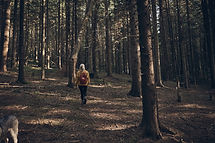
Climate Change
Global Temperature Change
Introduction
Humans have become acclimated to climatic circumstances that change daily, seasonal, and inter-annual. A rising amount of available data implies that, in addition to natural climate fluctuation, average climatic conditions evaluated over more extended periods (often 30 years or longer) are changing, in addition to the natural variation seen on decadal or century time scales. As a result, the reasons for climate change are becoming increasingly apparent. Climate model predictions of the consequences of greenhouse gas (GHG), co2 emissions, forest land reduction, and decrease of glaciers are observed. "There is new and stronger evidence that most of the warming observed over the last 50 years is likely related to human activities," they stated (IPCC).
Temperature Change over the Decades
It takes a massive amount of energy to increase the earth's temperature, given the size of ocean bodies and land area. However, the temperature has risen by 0.14 degrees Celsius per decade, and it has been increasing ever since.

Causes of Climate Change
The dialectics behind the earth's climate is simple. The temperature cools when the earth's atmosphere reflects the sun's energy into space. When the atmosphere absorbs energy, the temperature warms up. Before humans ever existed on the planet, it went through warming and cooling phases. However, climate change over the recent years has been extreme, and the natural causes have minimal influence on climate change.
Greenhouse gases help retain heat in the earth's atmosphere; however, the amount of these gases has skyrocketed in recent years. The atmosphere's share of carbon dioxide, the chief contributor to climate change, has increased by 46%. The burning of fossil fuels and transportation has increased the emission of these gases. Though forests help cool down the atmosphere, rise in the concrete jungle has been leading to cut down of these natural coolers.
CO2 Emissions
The chief contributor to climate change
CO2 is a greenhouse gas - it absorbs and retains heat to maintain the earth's temperature. If it weren't for the greenhouse gases, the world's temperature would be cold. The increase in CO2 has led to a rise in the earth's temperature.
Carbon dioxide is the earth's longest-living greenhouse gas. It absorbs less heat per molecule, but it stays in the atmosphere longer. CO2 also dissolves in the ocean, making it more acidic by decreasing the ph. The main reason for the increase in CO2 emissions in the atmosphere is human activities like burning fossil fuels like coal, oil, natural gas, etc. As a result, we put in more carbon dioxide each year than the biological processes can remove. Hence, there has been an increase in the CO2 level.
Gas Emissions by Sector
The energy sector has the highest gas emissions, accomodating about 73.2%. This sector includes energy use in the industry, transport, electricity, and unallocated fuel combustion. Amongst energy use in industry, the manufacturing of iron and steel releases a massive amount of gas into the atmosphere.
Agriculture is the second-highest sector emitting gases. It includes the entire food chain - cultivation, processing, refrigeration, and transportation.
Cutting down of forests
Forests protect ecosystems, help regulate carbon dioxide levels, supply products, and goods and maintain biodiversity. In addition, forests absorb carbon dioxide and hence, reduce greenhouse gases. According to an article by IUCN, almost one-third of the CO2 released by burning fossil fuels is absorbed by forests.
There are various reasons for deforestation. About 10% of deforestation happens due to cutting down trees for paper production, construction, palm oil plantations, soybean farmers, and cattle ranchers.
According to statistics, Globally, around 3.8 million hectares of tropical primary forest were destroyed which is the equivalent of losing a football field's worth every six seconds. US cities lose 36 million trees annually.

Excessive use of Transportation
In many ways, climate change and modern transportation go hand in hand. The life-changing technological advances from the Industrial Revolution that ushered in new modes of travel are the same technologies that have contributed to the wide-scale pollution of the planet. As machinery began to replace manual labor in the latter half of the eighteenth century, the use of fossil fuels, such as coal and oil, for power increased. Exciting new transportation vehicles, like cars and steam-powered trains and boats, were also powered by fossil fuels, which release large quantities of carbon dioxide into the air when burned. These growing levels of carbon dioxide have generated a significant greenhouse effect, which has caused the planet to warm at a much more rapid pace and to higher temperatures than pre-Industrial Revolution rates, thus leading to the changes in climate seen in the twenty-first century
Loss of Glacial Ice
Similar to how an ice cube melts when exposed to heat, glaciers are melting due to the rising temperatures. However, glaciers are much more complicated structures than ice cubes. First, they continue to form snow accumulates, and they compress into ice and start moving under the pressure of their weight.
The glaciers have been melting faster than ever, leading to an increase in the sea level. The main culprits for loss in the glacial ice are warm air and surrounding ocean water. It is also evident from the graph that the glacier mass balance has increased to -30 over the years.
Extinction of Species
The mammal Bramble Cay Melomys is the first mammal reported to have gone extinct due to climate change. Species are being impacted by anthropogenic climate change. Its rapid onset limits the ability of many other species to adapt to the change.
Climate change affects the habitat of animals and plants and disturbs the food chain. In addition, issues like imbalanced male to female sex ratios, hybridization - interbreeding of species, etc., lead to wiping out of species as well.
According to an article by IUCN, Climate change currently affects at least 10,967 species on the IUCN Red List of Threatened Species™, increasing the likelihood of their extinction.

Conclusion
Climate change is a very complex issue that we are facing today. Even if we stop emitting greenhouse gases, climate change will affect future generations. Although we cannot stop climate change, we can control the amount of climate change.
So what can be done regarding this issue? There are two ways, one of which is mitigation. Mitigation refers to reducing the emissions of CO2 and stabilizing the greenhouse gases. We will have to reduce the source of these gases by reducing the burning of fossil fuels and increasing sinks like forests to absorb the greenhouse gases.
The second is adaptation. While we follow mitigation practices, we have to adapt to climate change. Infrastructure has to be upgraded to suit the climate, and people have to adjust to the changing climatic conditions.
Citations
-
10 Solutions for Climate Change. https://www.scientificamerican.com/article/10-solutions-for-climate-change/
-
Responding to Climate Change. https://climate.nasa.gov/solutions/adaptation-mitigation/
-
Forest and Climate Change. https://www.iucn.org/resources/issues-briefs/forests-and-climate-change
-
Climate Change: Atmospheric Carbon Dioxide. https://www.climate.gov/news-features/understanding-climate/climate-change-atmospheric-carbon-dioxide
-
Global Climate Change: What you need to know. https://www.nrdc.org/stories/global-climate-change-what-you-need-know









